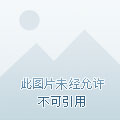Reporter | Chen Qirui
Edit | Lou Shuqin
1
The competition between H&M Group and Zara's parent company, Inditex Group, has taken on a new round of results.
H&M Group's disclosed results show that in the fourth quarter ended November 30, sales revenue increased by 8.1% year-on-year to SEK 56.813 billion (about RMB39.763 billion), but still lower than SEK 61.704 billion (approximately RMB43.187 billion) in the same period of 2019. Affected by the epidemic, H&M Group still has about 115 stores closed, most of which are located in Slovakia and Austria.
On the other hand, Inditex Group's recent third quarter 2021 results report shows that sales revenue recorded a total of 19.325 billion euros (about 138.866 billion yuan) in the nine months ended October 31, an increase of 21% and 10% at constant exchange rates compared with the same period in 2020 and 2019, respectively. The growth trend extended to the fourth quarter, with sales between November 1 and December 10 also up 10% at constant exchange rates compared to pre-pandemic levels.

Image credit: H&M
Considering that the holiday season is just around the corner, inditex Group's strong sales situation may continue. Although single-brand performance was not disclosed, Zara remained the main driver of growth, opening a total of 1975 stores during the reporting period, including 72 children's clothing stores and 507 home stores.
In the performance report, Inditex Group said that some of its brand stores are still closed due to the epidemic, but offline store sales have grown strongly. Part of the reason comes from the new flagship store opening program. In the three months ending September 30, the Inditex Group opened new image stores in core locations across 39 markets around the world. These stores have new ways of decorating and displaying, helping to strengthen the brand's fashion image and attract consumers.
At the same time, online business expansion also paid off during the reporting period, with sales from e-commerce channels up 28% year-on-year from 2020 and 124% from pre-pandemic levels. Thanks to this, Inditex Group expects e-commerce sales to account for 25% of total sales for the full year, compared to just 12% in fiscal 2018.
Inditex Group is one of the first e-commerce companies in the fast fashion industry to test the waters, opening an official website mall for Zara Home in 2007 and an e-commerce purchase channel for Zara and other brands in 2010 and 2011 respectively. Between 2015 and 2018, the number of markets covered by the Inditex Group's brand online channels worldwide grew from 29 to 202.
Image credit: Inditex
However, due to the wide range and large number of inditex group offline stores, online channels still cannot play a decisive role in the revenue improvement of the entire group in the short term. Around 2018, the fast fashion industry fell into a cold winter of slow growth, and Inditex Group's aggressive store expansion strategy in the early years pushed up maintenance costs, and the overall profit growth rate showed signs of slowing down in recent years.
In order to get out of the predicament, inditex Group began to adjust the development strategy of its brands. For Zara, some of the underperforming stores were closed and flagship stores were opened or upgraded in the heart of important cities, including asia's most major concept store on Wangfujing Avenue in Beijing in 2020.
For brands such as Bershka and Pull & Bear, the Inditex Group integrates its resources. Bershka, Pull & Bear and Stradivarius announced their exit from the Chinese market in early 2021 and will focus on online channels in the future. Uterqüe will be merged into Massimo Dutti.
As the epidemic once led to the closure of a large number of offline stores, Inditex Group's online layout has been more obviously rewarded, and the integration of online and offline channels is one of the goals of the Group's development today.
It is worth noting that the specific performance of the Zara beauty category, which has previously received a large number of marketing resources, has not been pointed out in the financial report. The beauty market is fiercely competitive, with luxury brands such as Hermès and Valentino entering the market, and a variety of more affordable start-up brands coming out, zara beauty is facing a lot of challenges.